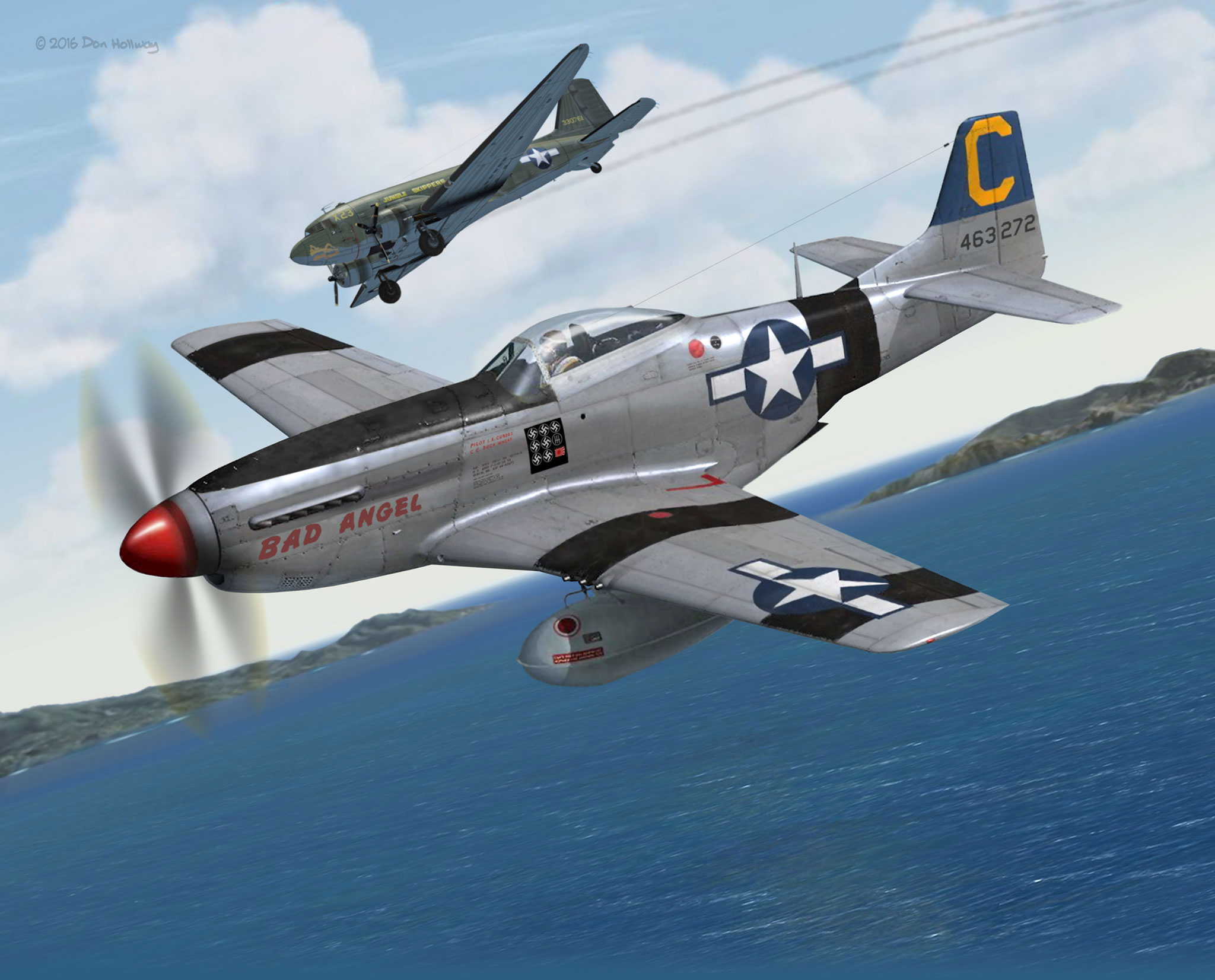





|
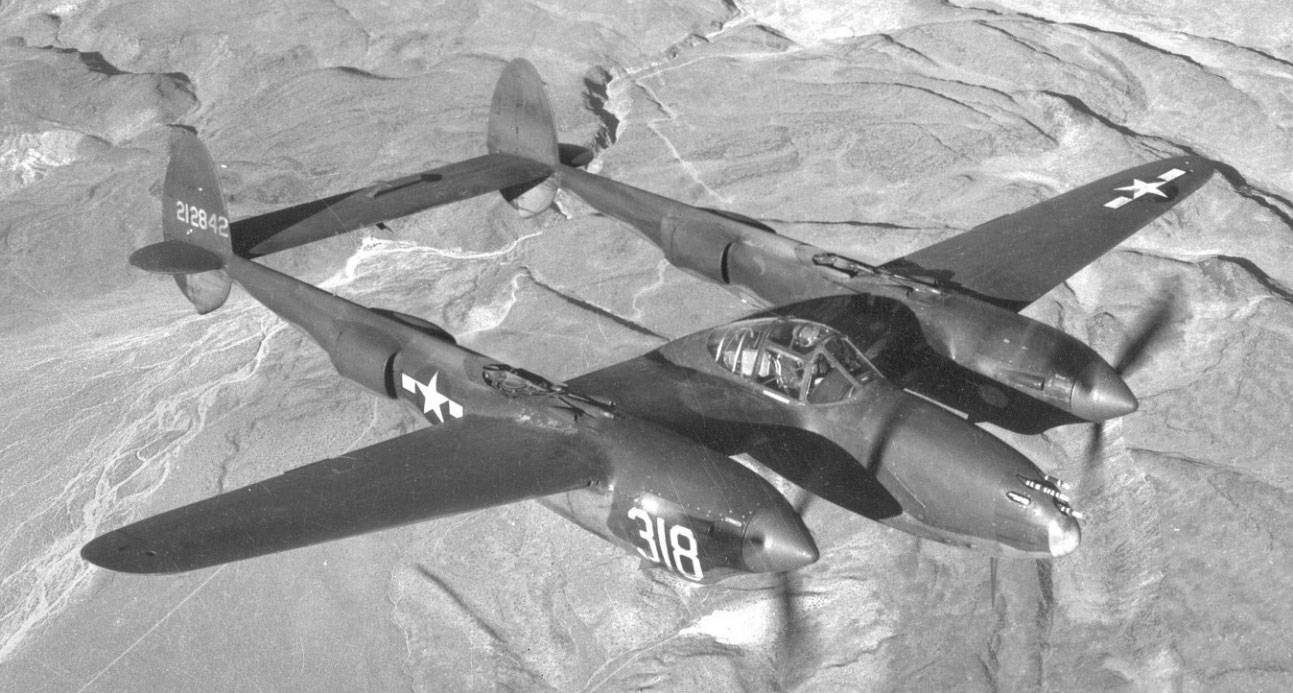
Lockheed P-38G-5-LO Lightning #42-12842.
In late April 1943 2nd Lieutenant Louis E. Curdes, of Ft. Wayne, Indiana, arrived in North Africa to fly a P-38G for the 95th Fighter Squadron, 82nd Fighter Group. He was just in time for the final phase of Tunisian Campaign, when the Luftwaffe was desperately trying to prevent the final defeat of Axis ground forces in North Africa. On his first mission, a bombing run on April 29th, the Lightnings ran into Messerschmitt Me-109s of German Jagdgeschwader (Fighter Wing) 27 over Cap Bon. 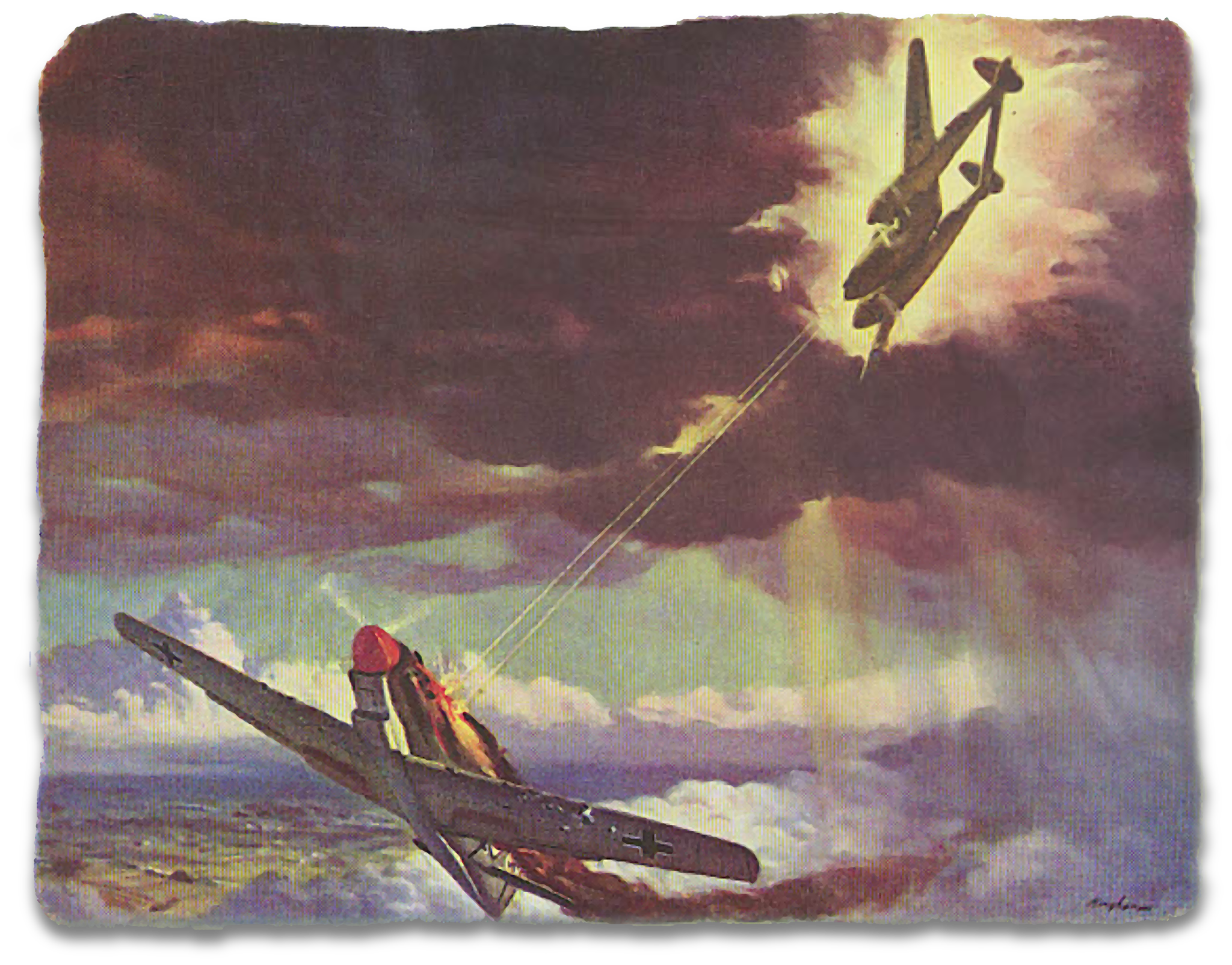
Lightning strikes a Messerschmitt, thanks to Veedol “A ’109 came across my sights at a 45-degree angle, passing to the left. I kicked left rudder and followed it down,” Curdes remembered. “When within 300 yards and at about 30 degree deflection I let go a very long burst. I could see my tracers curving right into his nose. I broke off at 100 yards and passed in front of the ’109, which nosed over and went straight in. There was a big splash and an oval of white foam.” Separated from his flight, Curdes spotted three Germans chasing a Lightning just above the water. “They evidently didn't see me, and I gave the right-hand plane a big burst. This '109 was lagging a bit behind the other two, which were in a very tight formation. My tracers went into him, puffs of black and white smoke came out and he did a wingover straight in.” The remaining Germans were still pursuing the struggling P-38. “I made a 30-degree deflection shot at the leader,” reported Curdes, “closing to 20 degrees and making about 350 mph. The '109 burst into flames, exploded and flopped into the water....The other '109 was pouring lead into the P-38. I came around on his tail, shot one burst, missed, and the '109 headed away for home. The other P-38 went into the sea.” Curdes was so low on fuel that he made a forced landing in a dry riverbed, taking off only after the Army brought in fuel and pierced-steel planking. He named his P-38G-5 “Good Devil” and adorned its nose with a Lucifer wearing a halo. 
P-38G-5 #42-13832, 2Lt. Louis Curdes, 95th FS, Souk-el-Arba, Algeria, June 1943 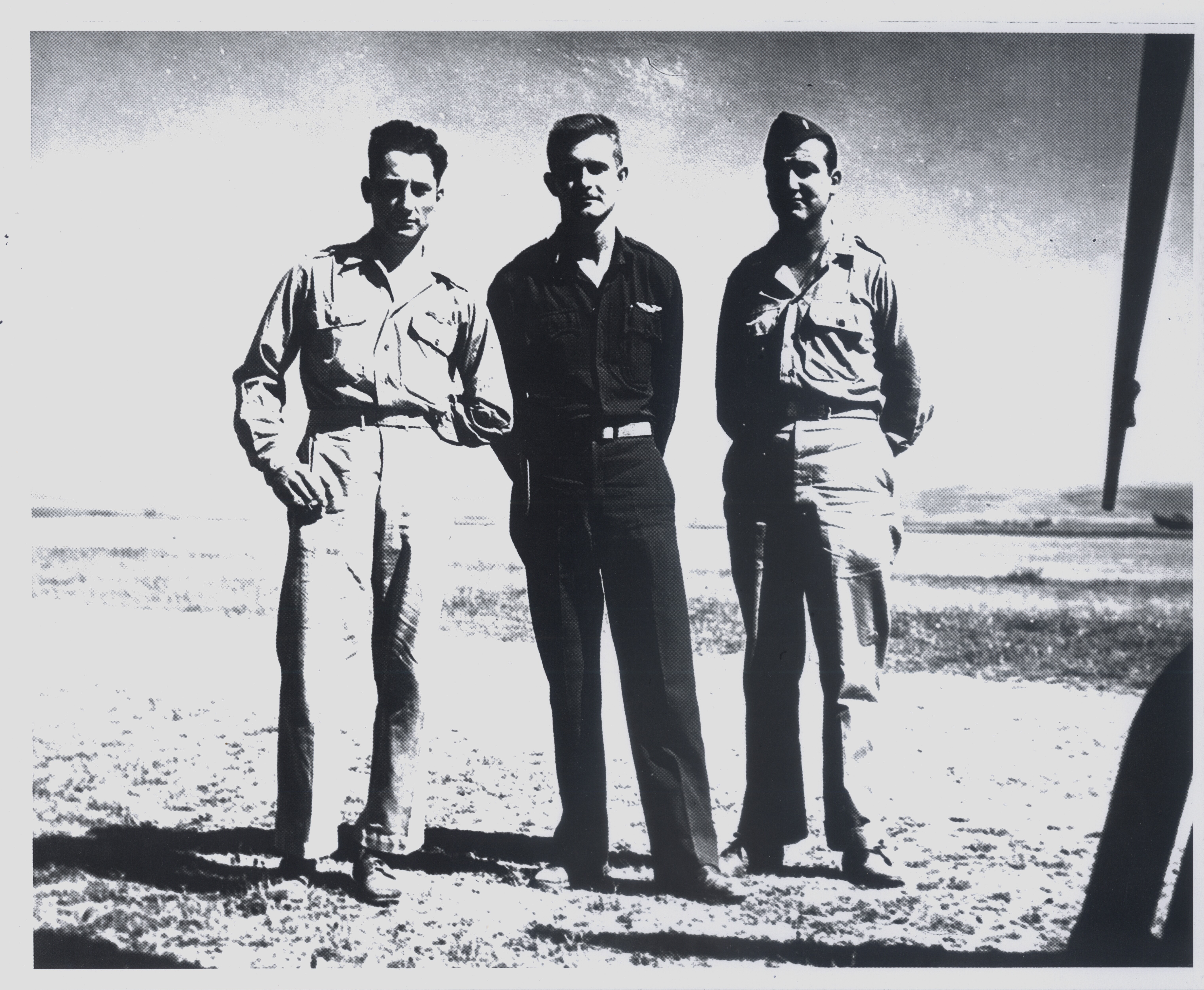
L-R: Lt. Jesse “Blackie” Oliver, Lt. Louis Curdes, Lt. Ralph C. Embrey, 95th FS, 82nd FG.
After just two missions and a little over a month of combat, Curdes’ new P-38G-10 got five swastikas painted on its nose. Over the summer of 1943 he flew 44 combat missions, 200 hours altogether. 
P-38G-10 #42-13150, Lt. Louis Curdes, 95th FS, Grombalia, Tunisia, August 1943 On June 24th, on another bomber-escort mission, he opened his account against a second Axis power, shooting down an Italian Macchi C.202 Folgore (Thunderbolt) over Golfo Aranci on Sardinia's northern coast. Some online sources claim the Macchi on display in the Smithsonian Air & Space Museum is the one shot down by Curdes, but according to curators this is unproven and doubtful. On July 30th, with the 82nd supporting the Allied invasions of Sicily and Italy, Curdes damaged a Me-109 over Pratice di Mare, Italy. The following month he was awarded the DFC, his citation reading in part, “The skillful and zealous manner in which he has sought out the enemy and destroyed him, his devotion to duty and courage under all conditions serve as an inspiration to his fellow flyers. His actions on all these occasions reflect the highest credit upon himself and the Armed Force of the United States.” 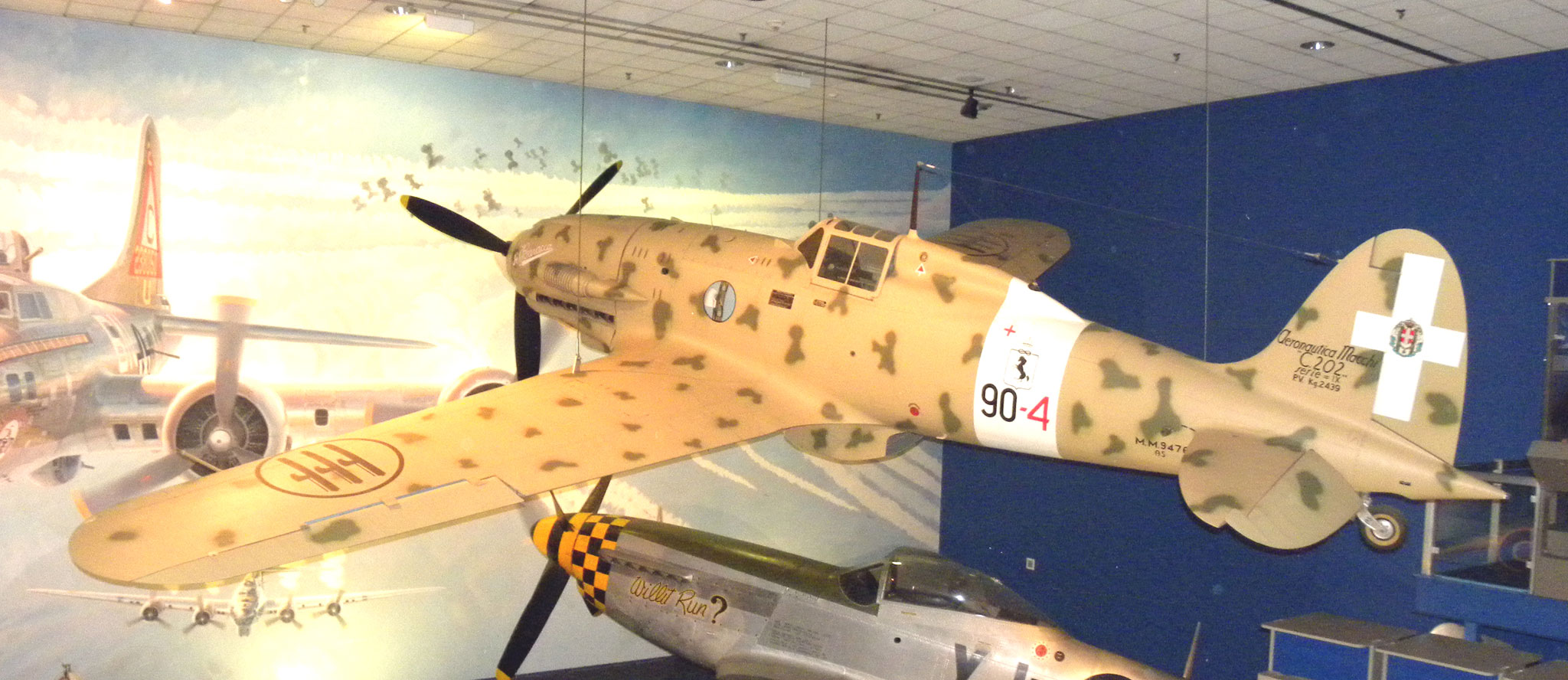
Macchi C.202 Folgore (Thunderbolt) in the National Air and Space Museum, Washington DC. Though lightly armed, the Folgore was highly maneuverable; its left wing was almost eight inches longer than the right, to offset the torque of its powerful German Mercedes engine. Axis pilots loved its light handling and superb agility. It was superior to both the Hawker Hurricane and the Curtiss P-40 Kittyhawk, an equal to the Spitfire Mk. V, and a match for the P-38. Some online sources claim this C.202 is actually the one shot down by Curdes on June 24th, during a bomber-escort mission over Golfo Aranci on Sardinia’s northern coast, but according to museum curators this is unproven and doubtful. On the 27th, however, Curdes’ luck ran out. While escorting B-25s to Benevento, Italy, the 95th tangled with 50 enemy fighters over Naples. Curdes scored two, but his Lightning was hit. He crash-landed on a beach about ten miles south of Salerno, setting his plane on fire before capture. That should have been the end of his fighter-pilot career. Capt. Robert B. Fisher, the 82nd FG intelligence officer, wrote Curdes’ family in Fort Wayne. “I’ve never seen him go out on a mission when he wasn’t confident of returning, when he wasn’t always the happy-go-lucky kid whose skilled hands drove the best fighter plane the Luftwaffe could throw against us. He was always the first to pitch into a fight, always the last to leave.” By the beginning of 1944, “We had given him up, you know,” Curdes’ mother Esther told a reporter. ”When we first heard he had been shot down last August, from all...we could gather, we had to come to the conclusion that he had fallen into the Mediterranean.” Then, in March, they received a letter from 1st Lt. Burt Lutz, one of Curdes’s best friends in the service. He had spoken with Lt. Edward J. Hyland of Chicago, who had been in an Italian POW camp near Rome. “He told me that he had just escaped,” Lutz wrote, “and that your son had escaped with him.” Initially penned in a monastery-turned-jail, Curdes and several other captives had escaped in little over a week, but were soon recaptured and sent to a maximum-security camp. Events in Italy, however, were moving even faster. Four days later, the country surrendered. Before their prisoners could be handed over to the Germans, sympathetic Italian guards gave them blankets and rifles and turned them loose. For eight months, sleeping in caves, scrounging food and sheltering with partisans, Curdes and others worked their way south toward the Allied advance. On May 27, 1944—nine months to the day after being shot down—he was sleeping in a goat pen when he heard the sound of fighting, headed toward it, and ran into advance units of the British 8th Army. 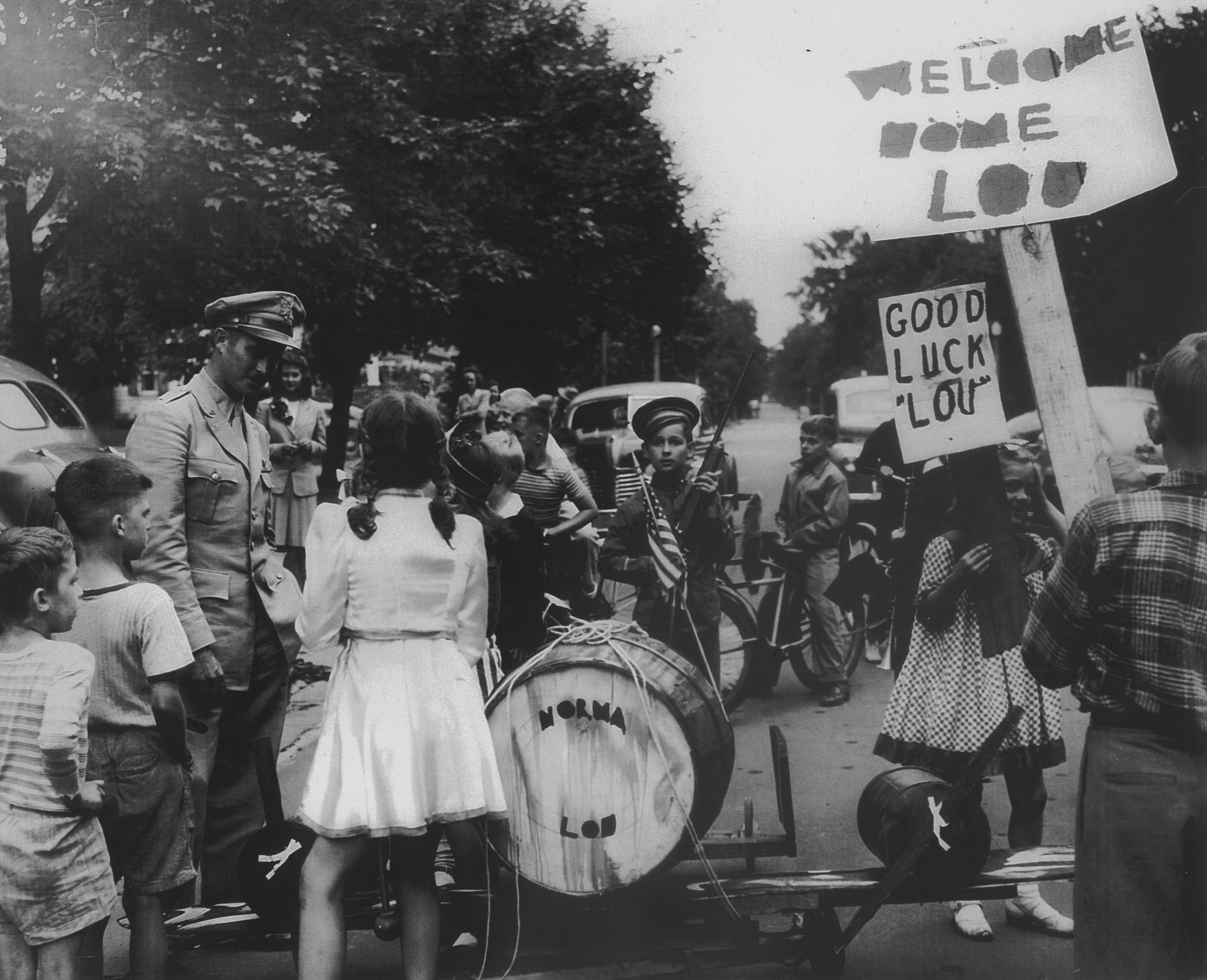
Homecoming in Ft. Wayne. June 1944. Ft. Wayne was unable to stage an official parade for the hero’s homecoming, but neighborhood children pulled him down Florida Drive in a makeshift Lightning with cheese-box engines and a fuselage made out of a barrel. More. Triple-Axis Aces Besides Louis Curdes, only three other American aces are said to have scored kills over all three Axis powers, and only are two actually credited. Click photos for more info. 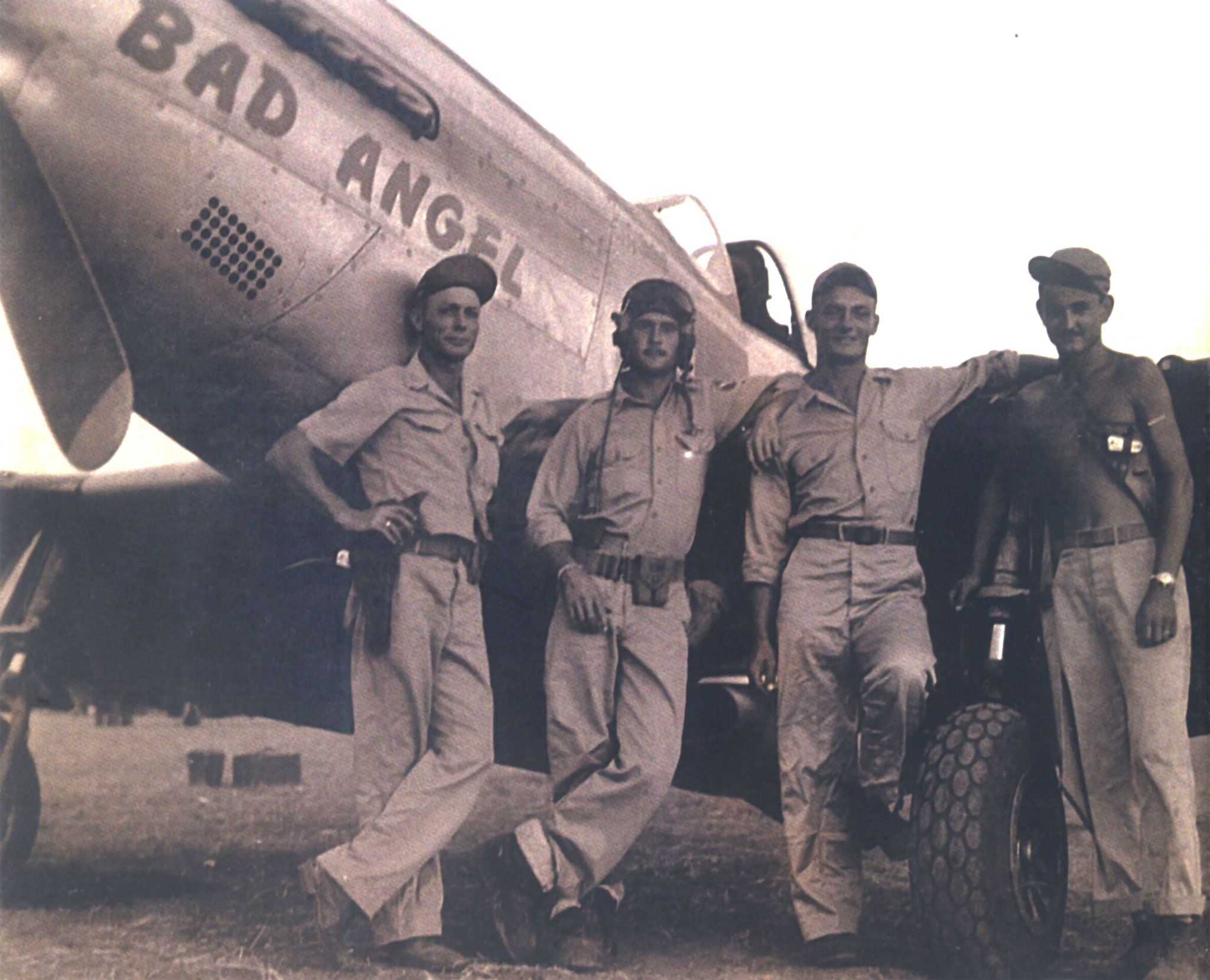
Curdes in the Pacific with his flight crew and P-51D, “Bad Angel.” Check out the ivory handles on the 1911s! Regulations forbade a former POW to risk himself on the same front, lest he be recaptured and have the secrets of his escape tortured out of him. But the war wasn't over, and Curdes had plenty of fight left in him. He transferred to the Pacific. On January 6, 1945, American forces landed at Lingayen, the capital of Pangasinan Province, Philippines. The 3rd Air Commando Group, a mixed fighter/liaison/transport unit under the Fifth Air Force, moved into newly built Mangaldan Airfield. Consisting of six combat squadrons and four support units, including two fighter squadrons, three liaison squadrons and one transport squadron, the Commandos flew ground support missions, escorted bombers to Formosa and the Chinese coast, supported ground forces in the Philippines, and provided top cover for ship convoys. As part of 4th Fighter Squadron, Curdes flew P-51D/20-NA #44-63272, Bad Angel. Evenings, he and the other pilots dated nurses in Lingayen. 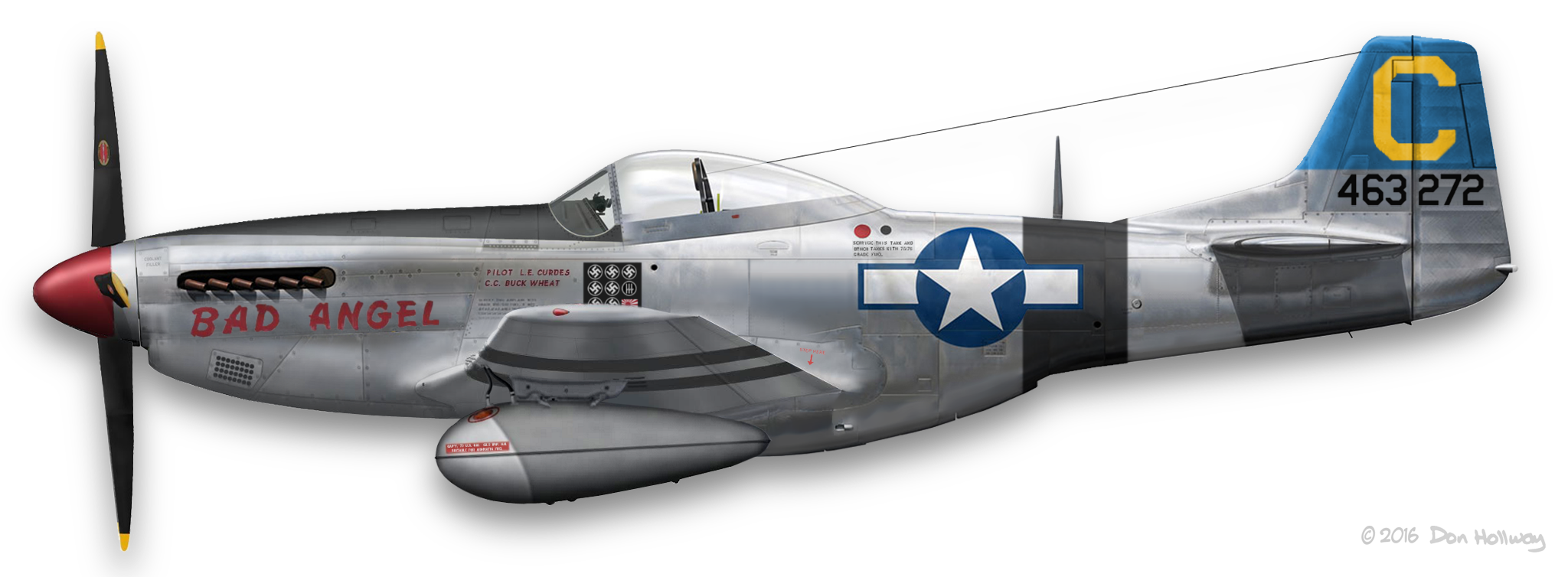
P-51D/20-NA #44-63272, Capt. Louis Curdes, 4th Fighter Squadron, 3rd Air Commando Group, Mangaldan, Philippines, February 1945 A month into his Philippines tour, Curdes completed the hat trick. On February 7th, 30 miles southwest of Formosa, he shot down a Mitsubishi Ki-46 twin-engine reconnaissance plane of the Imperial Japanese Army. Catching a “Dinah” was no mean feat; aerodynamically it was one of the best-designed aircraft of the war, capable of 400mph at 20,000 feet out to 2,500 miles. (Germany was even interested in manufacturing it under license for the Luftwaffe.) 
Ki-46-III Type 100 Model 3, 106th Sentai. Yachimoto, Japan, April 1945. The victory, his ninth, made Curdes one of just three American aces credited with downing aircraft of all three Axis powers. But just three days later he would make more aviation history. Curdes led a flight of four Mustangs 400 miles from Mangaldan to the southern tip of Formosa in search of a suspected new Japanese airbase. They found nothing and turned for home. As they overflew Batan Island in the Formosa Strait (often confused online with Bataan), they ran into enemy fighters over an airstrip, shot down two and got three others on the ground, against intense antiaircraft fire. Curdes' section leader was hit and bailed out into the sea. Curdes sent his #4 to Mangaldan to bring more fighters, and ordered his own wingman up to 15,000 feet to radio for a flying-boat rescue. Meanwhile he strafed the enemy airfield to keep any Japanese fighters on the ground. When he came up again, however, his problem was not planes trying to take off, but one trying to land. A twin-engine transport was approaching low from the east. It looked like an American Douglas C-47 Skytrain, but the Japanese Showa/Nakajima L2D Type 0 transport, a copy of the C-47 built under license since 1938, was actually the most common Japanese transport throughout the war. Seeing its American stars, Curdes would remember thinking, “Those damned Japs have patched up one of our buggies, and didn't even have the grace to take the markings off.” 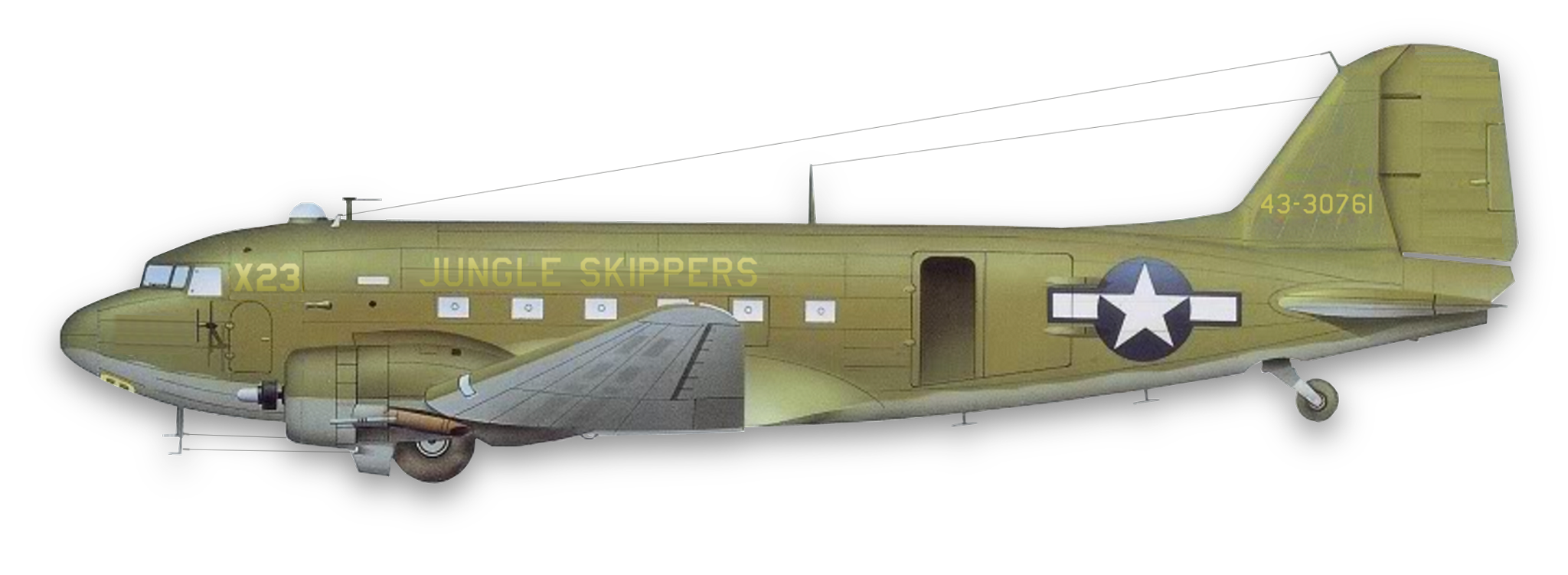
Douglas C-47A-DL (DC-3) X23, #43-30761, 39th Military Airlift Squadron, 317th Troop Carrier Group, Philippines, February 1945 “The P-51 pilot had to decide whether it was one of our own planes that was lost or a Jap-built DC-3 with American insignia,” remembered General George C. Kenney, commander of the Allied Air Forces in the Southwest Pacific Area. “He flew up alongside and satisfied himself that the pilot was not a Jap.” Curdes recognized the markings of “the Jungle Skippers,” the 317th Troop Carrier Group. This C-47A-DL of the 39th Military Airlift Squadron had taken off at 0700 from Leyte to Clark Field with a cargo of mail and eight passengers, including two nurses, but rough weather over Manila Bay had carried it far off course. According to their report, after almost five hours in the air, they were low on fuel and couldn't raise any help via radio: “We received no bearings or response of any kind. The airplane continued until 1150 hrs, and was still over water. The pilot then informed his passengers that he was in trouble and would set the airplane down on the first land he saw.” They spotted several islands, including one with a 3,500-foot grass airstrip, but didn't recognize it as enemy-held Batan. “I tried to contact the pilot by radio,” Curdes reported. “This failed.” “[Curdes] then dived in front of the transport to keep it from landing on the Jap-held strip,” Kenney learned. “The pilot of the transport circled again and again started to glide in for a landing. The P-51 pilot then decided on a desperate measure.” “The gear was put down,” went the C-47 report, “and at 150 ft altitude, with the airplane at half flaps and about to be put down, six strings of tracers came up in front of us.” “I shot across the nose of the ship,” Curdes reported, “but still he came on.” By now they were so near the field that Japanese flak guns opened up on the P-51, though not at the C-47. The Skytrain might not be Japanese, but it soon would be. Curdes couldn't let it reach that base. In what he called a “last resort,” Curdes closed to twenty yards, took careful aim and, with his six .50-caliber machine guns, took out the Skytrain's right engine. Still the transport held on approach. The passengers and crew inside must have been horrified to see the Mustang, just outside, sideslip over to port and shoot up their left engine. That did it. “We ditched 300 yards from shore,” they reported. “...12 of us got into the three rafts. The P-51 circled us for an hour but did not fire again.” Curdes slid his canopy back and dropped them a message: “For god's sake, keep away from shore. Japs there.” By now everybody had figured that out. “We were out about a mile when machine guns and rifles opened up on us from the shore,” reads the crew report. “We were out of range, but the shooting continued for 30 minutes.” Curdes and his wingman returned to Mangaldan, but before dawn returned to Batan to find the life rafts, including that of their section leader, bobbing together in Songsong Bay, west of the island. They flew cover until a Catalina arrived and got everybody out safely. “They were all quite put out at the action of the P-51 lad,” remembered Kenney, “until the situation was explained to them, but from then on the kid was the greatest hero of the war as far as they were concerned.” Back at base, Curdes was handed the C-47’s passenger manifest and was shocked to recognize the name of a nurse he’d dated in Lingayen. “Jeepers,” was his response, or at least that of the journo who wrote his story in the August 1945 issue of Air Force magazine: “Seven 109's and one Macchi in North Africa, one Jap, and one Yank in the Pacific—and to top it, I have to go out and shoot the down the girlfriend.” The popular version of the tale has Curdes go on to marry the nurse and live happily ever after. Not quite. “My dad might have been dating a nurse on the plane that was shot down,” reports his daughter, Valeria Whitney, “but he went out on a blind date with my mom in Los Angeles, California. Love at first or second date!” They would be married in 1946. “The P-51 lad already had painted on the nose of his airplane seven Nazi swastikas and one Italian insignia...as well as a Jap flag for a victory in the Pacific. He added an American flag in memory of his latest exploit,” remembered Kenny. “I awarded him an Air Medal for the job and told him I hoped he wouldn't feel called on to repeat that performance.” For his quick thinking and sharp shooting, Curdes also received an oak leaf cluster to his DFC. The C-47, however, was not counted as an official victory. His score stands at nine. 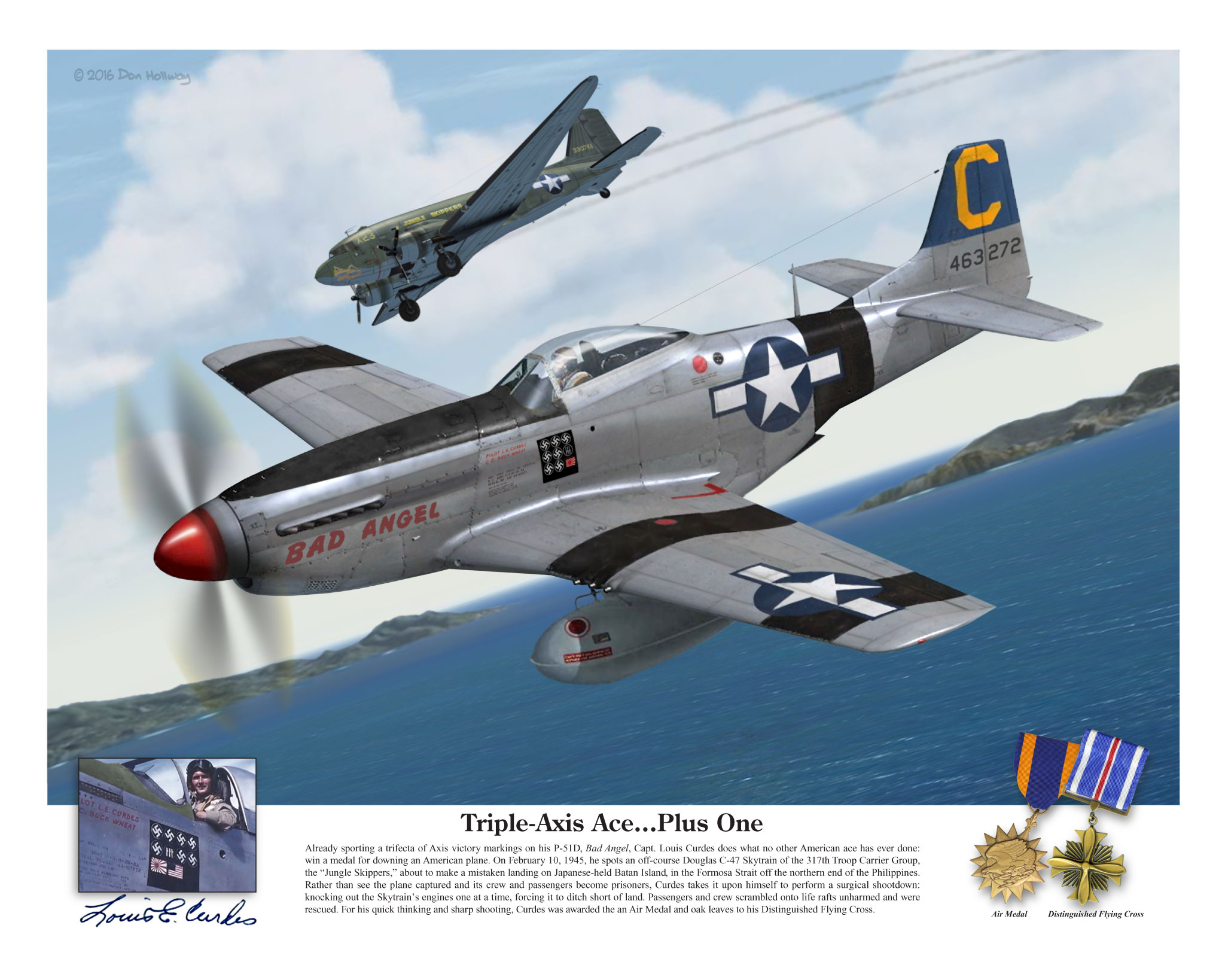
Triple-Axis Ace...Plus One by Don Hollway Already sporting a trifecta of Axis victory markings on his P-51D, Bad Angel, Capt. Louis Curdes does what no other American ace has ever done: win a medal for downing an American plane. On February 10, 1945, he spots an off-course Douglas C-47 Skytrain of 317th Troop Carrier Group, the “Jungle Skippers,” about to make a mistaken landing on Japanese-held Batan Island, in the Formosa Strait off the northern end of the Philippines. Rather than see the plane captured and its crew and passengers become prisoners, Curdes takes it upon himself to perform a surgical shootdown: knocking out the Skytrain's engines one at a time, forcing it to ditch short of land. Passengers and crew scrambled onto life rafts unharmed and were rescued. For his quick thinking and sharp shooting, Curdes was awarded the an Air Medal and oak leaves to his Distinguished Flying Cross. Available as a full color art print. Only $34.95! 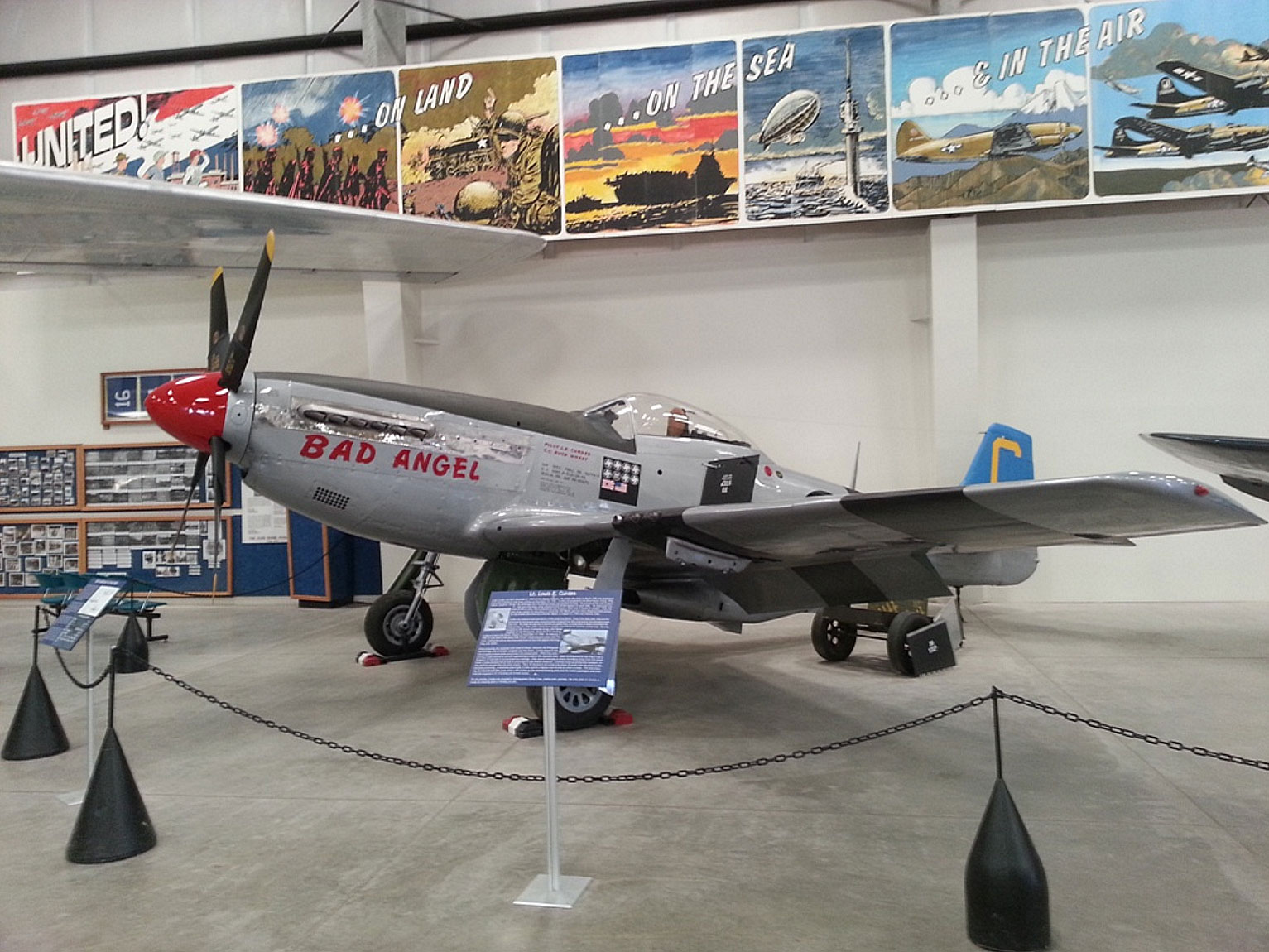
Pima Air & Space Museum P-51D/20-NA painted to match Curdes’ #44-63272, “Bad Angel” Before the war’s end Curdes flew Lightnings with the 49th FG. He went on to take part in the Berlin Airlift and retired from the U.S. Air Force in 1963 as a lieutenant colonel. After his death in 1995, Senator Richard Lugar (R-Ind) addressed the United States Senate: “It is with great respect that I call to my colleagues’ attention the contributions Louis Curdes made to his country. He is truly an example and inspiration for all who follow him.” 
More from Don Hollway:
|
